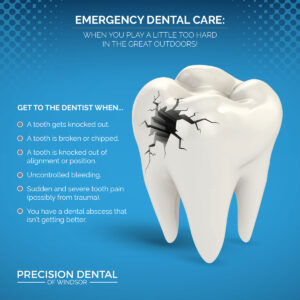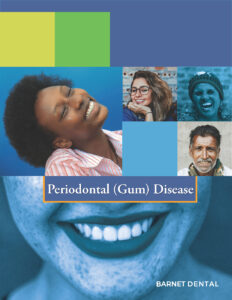Manhattan Maxillofacial Surgery Group
Contact
Hours
- Monday: 9:00am – 9:00pm
- Tuesday: 9:00am – 6:00pm
- Wednesday: 9:00am – 9:00pm
- Thursday: 9:00am – 9:00pm
- Friday: 9:00am – 5:00pm
Manhattan Maxillofacial Surgery Group, located in the heart of New York City, is a leading practice specializing in oral and maxillofacial surgery. The group is renowned for its state-of-the-art facilities, cutting-edge technology, and a team of highly skilled animal surgeons dedicated to providing exceptional care. Patients receive personalized, compassionate treatment tailored to their specific surgical needs.
Surgical Services
Oral Surgery
- Wisdom Teeth Extraction: Safe and effective removal of impacted or problematic wisdom teeth.
- Dental Implants: Expert placement of dental implants to replace missing teeth and restore oral functionality.
- Tooth Extractions: Removal of damaged or decayed teeth, with options for sedation to ensure patient comfort.
Maxillofacial Surgery
- Jaw Surgery (Orthognathic Surgery): Corrective surgery to address jaw alignment issues, improve function, and enhance facial aesthetics.
- Treatment of Facial Trauma: Comprehensive care for facial injuries, including fractures and lacerations.
- Reconstructive Surgery: Rebuilding facial structures affected by trauma, disease, or congenital conditions.
Advanced Procedures
- TMJ Disorders: Diagnosis and surgical treatment of temporomandibular joint disorders to relieve pain and improve jaw function.
- Bone Grafting: Advanced bone grafting techniques to prepare the jaw for dental implants or to repair bone loss.
- Oral Pathology: Diagnosis and surgical treatment of diseases affecting the mouth, jaws, and related structures.
Patient Care
Consultation and Planning
- Comprehensive Evaluations: Detailed assessments to create personalized treatment plans tailored to each patient’s needs.
- Advanced Imaging: Use of cutting-edge imaging technology, including 3D scans, for precise diagnosis and treatment planning.
- Pre- and Post-Operative Care: Thorough guidance and support before and after surgery to ensure optimal recovery and outcomes.
Comfort and Support
- Patient Education: Detailed explanations of procedures and recovery processes to help patients feel informed and confident.
- Comfort Management: Options for sedation and anesthesia to ensure patient comfort and reduce anxiety during procedures.
- Follow-Up Care: Regular follow-up appointments to monitor healing and address any concerns promptly.
Exostosis
Dental exostosis, also known as buccal exostosis or mandibular exostosis, is a benign bony growth that protrudes outward from the surface of the jawbone, typically along the outer surface of the maxilla (upper jaw) or mandible (lower jaw). These bony protrusions are covered by gum tissue and can vary in size and shape.
Here are some key points about dental exostosis:
- Appearance: Dental exostosis appears as smooth, rounded, or irregular bony outgrowths on the outer surface of the jawbone, near the roots of the teeth. They may occur unilaterally (on one side of the jaw) or bilaterally (on both sides) and can be solitary or multiple.
- Causes: The exact cause of dental exostosis is not fully understood, but it is believed to result from a combination of genetic predisposition and environmental factors. Chronic irritation or mechanical stress to the jawbone, such as from teeth clenching or grinding (bruxism), may contribute to the development of exostoses.
- Prevalence: Dental exostosis is relatively uncommon but can occur in individuals of any age or ethnicity. It may be more prevalent in certain populations or ethnic groups, but overall prevalence rates are not well-documented.
- Symptoms: In many cases, dental exostosis does not cause any symptoms and is discovered incidentally during routine dental exams or radiographic imaging. However, larger exostoses may cause discomfort, difficulty with oral hygiene, or aesthetic concerns, particularly if they interfere with the placement of dental prostheses or appliances.
- Treatment: Dental exostosis typically does not require treatment unless it causes significant symptoms or functional impairment. In such cases, surgical removal of the exostosis may be recommended. However, because exostoses are benign and tend to grow slowly, treatment is usually only considered if necessary for symptomatic relief or to facilitate dental procedures.
- Prognosis: The prognosis for individuals with dental exostosis is generally good. Surgical removal of exostoses is usually successful and does not typically result in recurrence. However, as with any surgical procedure, there are risks associated with anesthesia, infection, and postoperative complications that should be discussed with a healthcare provider.
In summary, dental exostosis is a benign bony growth that protrudes outward from the surface of the jawbone. While it often does not cause any symptoms and may not require treatment, individuals experiencing discomfort or functional impairment should consult a dentist or oral surgeon for evaluation and appropriate management options.
Emergency Treatment
Dental emergencies can range from sudden toothaches and broken teeth to injuries involving the mouth or jaw. These situations can be distressing and require prompt attention to alleviate pain, prevent further damage, and preserve oral health. Here are some common types of dental emergencies and their respective treatments:
- Toothaches:
- Treatment: The appropriate treatment for a toothache depends on the underlying cause. In many cases, toothaches are caused by dental decay, infection, or trauma to the tooth. Treatment may involve removing decay, performing a root canal procedure, or extracting the tooth if it cannot be saved.
- Chipped or Broken Teeth:
- Treatment: If a tooth is chipped or broken, it's essential to see a dentist as soon as possible. Treatment options may include dental bonding, dental crowns, or veneers to restore the appearance and function of the tooth. In some cases, a root canal may be necessary if the inner pulp of the tooth is damaged.
- Knocked-Out Tooth (Avulsed Tooth):
- Treatment: A knocked-out tooth requires immediate attention to increase the chances of successful re-implantation. If possible, gently rinse the tooth with water, being careful not to remove any attached tissue fragments. Place the tooth back into its socket if feasible, or store it in milk or saliva until you can see a dentist. Time is of the essence, so seek emergency dental care immediately.
- Lost or Loose Dental Restorations:
- Treatment: If a dental filling, crown, or bridge becomes loose or falls out, it's essential to see a dentist promptly. Your dentist can assess the situation and determine the appropriate course of action, which may involve repairing or replacing the restoration to prevent further damage or discomfort.
- Abscesses or Dental Infections:
- Treatment: Dental abscesses or infections can cause severe pain, swelling, and fever and require immediate attention to prevent complications. Treatment typically involves draining the abscess, prescribing antibiotics to clear the infection, and performing root canal therapy to remove infected tissue and save the tooth.
- Soft Tissue Injuries:
- Treatment: Injuries to the soft tissues of the mouth, such as lacerations, puncture wounds, or tears to the lips, cheeks, or tongue, may require cleaning, suturing, or other interventions to promote healing and prevent infection. Seek medical or dental care promptly for assessment and treatment.
In any dental emergency, it's crucial to remain calm and seek professional help as soon as possible. Contact your dentist or an emergency dental clinic for immediate assistance, especially if you're experiencing severe pain, swelling, bleeding, or difficulty breathing or swallowing. Remember to follow any first-aid instructions provided by your dentist or healthcare provider until you can receive proper treatment.




